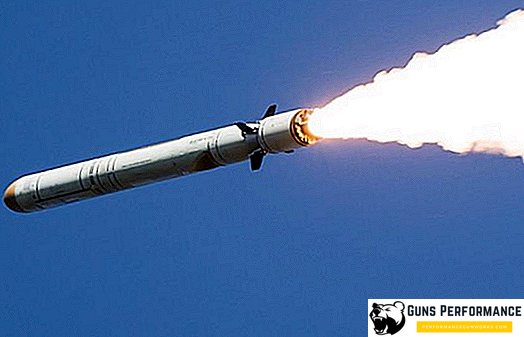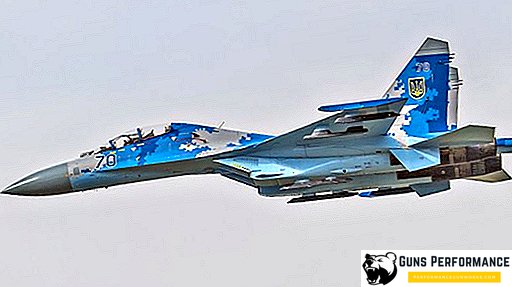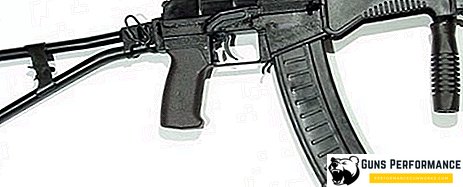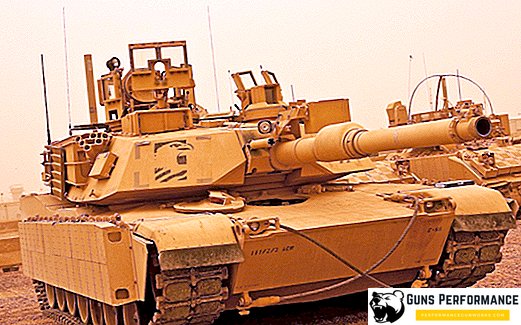ZIL-4102 - Soviet executive class car, which was not included in the serial production by decree of the first president of the USSR. The machine was developed by a special team of the Likhachev plant. Engineers collected two prototypes, which demonstrated the first person of the state.

The history of the ZIL-4102
When Mikhail Gorbachev came to power, ZIL developed a new modification of the 115th model. The President accepted ZIL 41047, spoke positively about transport. In the next few years I used a car to travel around Moscow and the country (I drove independently). By 1986, the limousine is outdated. Mikhail Gorbachev expressed a desire to get a new transport, which will receive a modern design, will be faster, more maneuverable and more dynamic. The following year, the company received a state order to develop a new limousine for the transportation of important politicians.
The special unit of the plant worked continuously: from the 80th year, a base was created for a new car, a new, unique design was developed, which meets modern requirements. A distinctive feature was the lack of angular elements that people have become accustomed to in recent years.

A conceptual model appeared in 1985. The new generation was planned to be presented in two models - 4101 (a limousine with a wheelbase of 3,760 millimeters) and 4102 (a shortened sedan with a wheelbase of 3,300 millimeters). Later planned to develop a phaeton based on the standard version. The receipt of the state order forced the specialists of the company to move from the conceptual model to the practical implementation of the project. It required maximum efficiency - the first prototype had to be ready in six months.
I had to work for days without breaks and weekends. Designers were engaged in finalizing the appearance and interior. Engineers prepared technical documentation for the assembly of the first copy. To simplify the work, the specialists assembled a full-size mock-up for which architectural solutions were “tried on”, technical components and assemblies were checked for compatibility. The project was led by the chief designer of ZIL - E.D. Gusev.
Device and design ZIL-4102
The car received a unique design, which was significantly different from previous domestic developments of the premium class. Appeared carrying body. The engineers did not use the platform of the old generation, they developed a new and unique one. This allowed to get rid of a large structure, making the machine more compact and more dynamic.
The body has become lighter and tougher. This was made possible through the use of fiberglass for the manufacture of bottom panels, roof, hood and trunk. Rear and front windshields were fastened to the openings with the help of special, ultra-strong glue. For fixing the roof panels to the frame used glue used in the aerospace industry.
Independent spring suspension of all wheels has become an innovation for the Russian automotive industry. The suspension design was complemented by bearing subframes with a "anticleak" effect. At the heart of the front suspension lay double lever technology. In the device rear suspension lay kinetic scheme Mercedes. To improve the quality of the rear subframe, some Rolls-Royse technology has been applied. The increase in brake mechanisms led to an increase in discs on wheels - they got a 17-inch size. Each wheel was equipped with disc brakes with floating brackets.

The power unit and hydromechanical transmission, in comparison with the last generation, did not receive changes. Motor ZIL-4104 has the following characteristics:
- Volume - 7.7 liters;
- The number of cylinders - 8;
- The location of the cylinders - V-shaped;
- Engine type - carburetor;
- Carburetor - four-chamber;
- Power - 315 horsepower at 4.4-4.6 thousand revolutions.
Last updated 41047 received a contactless ignition system. Innovative development was transferred to a new generation of government cars. The power plant gave a lightweight sedan quality sports car. Hinges of equal angular speeds were responsible for the drive to the rear wheels. The rear axle is made on a split type - the gear case is fixedly mounted on a separate subframe by means of elastic supports.

Designers have simplified the interior of the cabin, but did not make it less representative. To make passengers feel comfortable, we paid special attention to sound and thermal insulation. To do this, the engine is enclosed in a special capsule that reduces noise in the cabin. After conducting numerous tests, the designers managed to achieve complete elimination of the vibration of the body panels. Car ZIL-4102 lost its glass partition. Instead, added the ability to electrically adjust the two sections of the back of the sofa, which accommodates three people. A unique feature was the presence of an onboard computer with a voice alert function. It was developed by German specialists for the special order ZIL.
Front optics borrowed from the Swedish company Volvo (in those years, ZIL and Volvo worked closely). The headlights took from the first prototype of the Volvo-850 (the series subsequently received other front lights). Thanks to the remaining powerful powerplant and reduced mass, it was possible to improve acceleration to 100 km / h - the new sedan needed 10.5 seconds. The average fuel consumption was 18-21 liters per 100 kilometers, depending on the average speed.

What happened next?
The first copies were prepared for May 1988. The first demonstration was held for the chairman of the USSR Council of Ministers, I.S. Silaeva. He liked the new generation of cars. After that, the transport was shown to the president, but his new development did not work. Gorbachev did not make any specific claims, saying the general "Something is not right ...". The company's engineers did not understand what to do with such an assessment. Before that, the head of state either accepted the car or sent it back for revision, and then proceeded to mass production.
Despite the lack of specifics, prototypes continued to be tested at the factory sites and made improvements to the design. In August 1991, due to the difficult situation in the country, it became clear that the project would not receive demand. When the country began to move to the market system, the ZIL could independently begin production of a new sedan and limousine. This required funding and then clients to buy expensive transportation, which is practically impossible in a crisis. The project was closed, the limousine was disposed of, and the sedan, after years of idle time at the plant, went to the private collection of the Lukoil top manager.

What can be concluded?
ZIL-4502 equate to the number of promising developments of Soviet specialists who could get wide demand, but their development stopped at the stage of several copies. An explanation of the decision of Mikhail Gorbachev was never found. According to unofficial data, now the developments 4102 are used for the modernization and implementation of a new class transport, which is being developed in the framework of the "Cortege" project.












